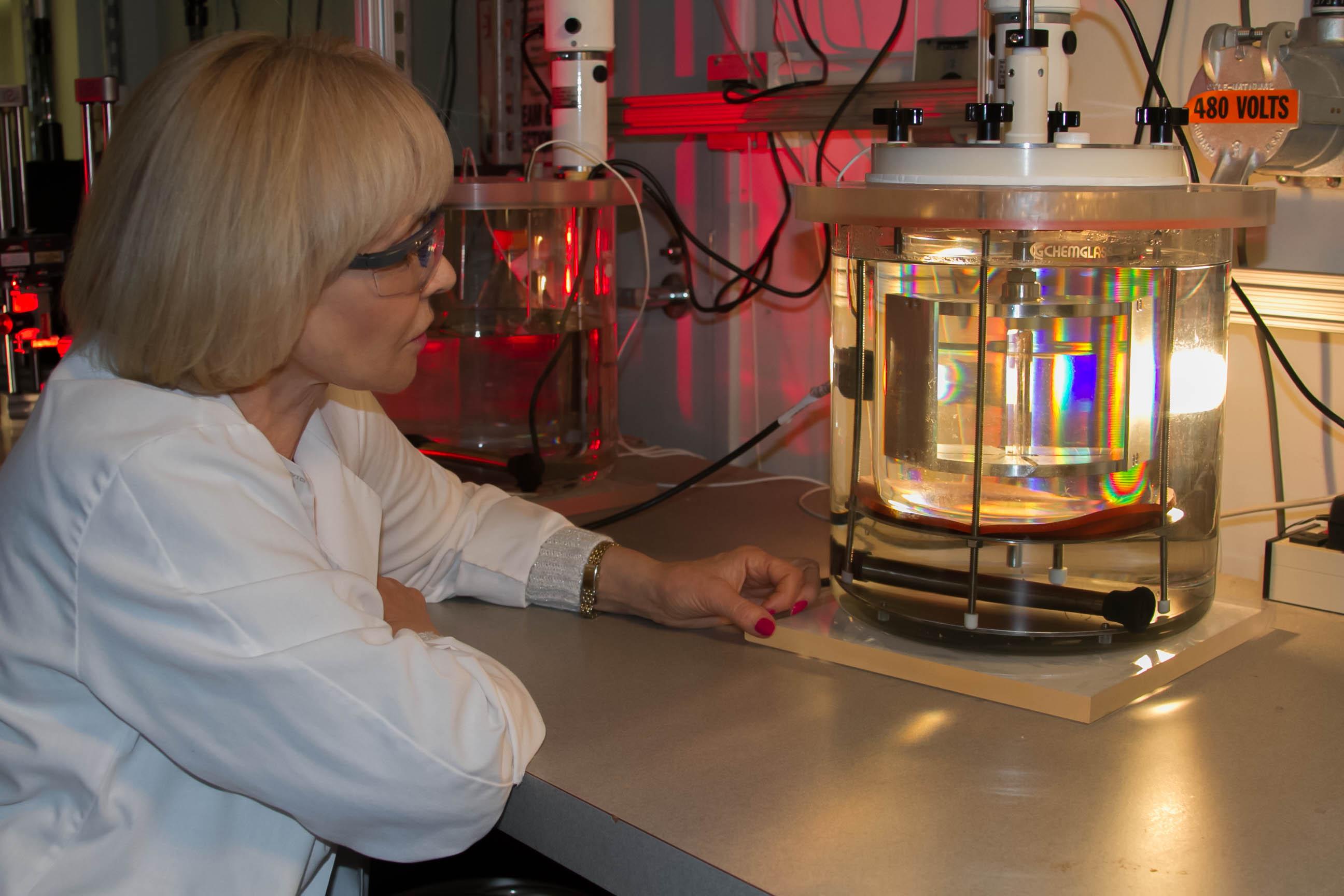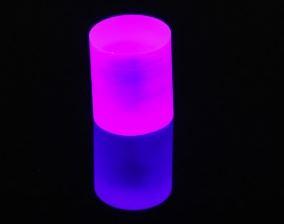The ability to detect gamma rays and/or neutrons is a vital tool for many areas of research. Gamma-ray/neutron detectors allow scientists to study celestial phenomena and diagnose medical diseases, and they have been used to determine the yield in an underground nuclear test. Today, these detectors are important tools for homeland security, helping the nation confront new security challenges.
One particularly useful type of radiation detection, pulse shape discrimination (PSD), which is exhibited by some organic scintillators, involves subtle physical phenomena which give rise to the delayed luminescence characteristic of neutrons, providing a means of distinguishing neutrons from the preponderance of prompt luminescence arising from background gamma interactions.
Stilbene has been found to be the most effective organic scintillator in terms of PSD, size, and optical quality compared to other organic scintillators including liquids. However, single-crystal stilbene, has a very limited availability because of difficulties in its crystal growth from melt.
Accordingly, it would be beneficial to grow organic scintillator crystals, including stilbene and other types of crystals, using solution growth, which should thereby increase access to such materials as well as significantly reduce their cost.
LLNL has identified solution-grown organic crystals having scintillation efficiency not only close to, but even exceeding that of stilbene.. LLNL's invention relates to a new class of neutron detectors based on scintillation response of organic single crystals. More specifically, the use of organic molecules grown from solution and to molecules including the basic benzene or phenyl structure.
- Reduced cost of solution growth
- Fast neutron detection in the presence of a strong gamma ray background
- Good luminescence properties, with emission in a wavelength range well matched with standard PMT photocathodes and light yield close to that of anthracene and stilbene
Potential applications include:
- detection of illicit nuclear weapons at ports of entry, at security checkpoints, at sensitive city installations, in scanning equipment for wide area sweeping, at off shore facilities, on ships and/or boats, etc.
- monitoring of nuclear power plants for dangerous and/or unhealthy levels of radiation or leakage detection.
- scientific measurements of neutron emitters, such as in laboratory or classroom settings.
LLNL has filed two patent applications for this invention. Refer to the patent documents and scientific publications listed below for more information.
U.S. Patent 8,461,546.
U.S. Patent 8,207,507.
U.S. Patent Publication No.2012/0326042.
U.S. Patent 8,735,843
Zaitseva, N. et al. (2009) "Growth and Properties of Lithium Salicylate Single Crystals," Crystal Growth & Design, Vol. 9, No. 8, 3799-3802.
Hull, G. et. al. (2009) "New Organic Crystals for Pulse Shape Discrimination," IEEE Transactions on Nuclear Science, Vol. 56, No. 3., 899-903.
Zaitseva, N. et al. (2009) "Neutron detection with single crystal organic scintillators," Proceedings of SPIE, Vol 7449, 744911.



